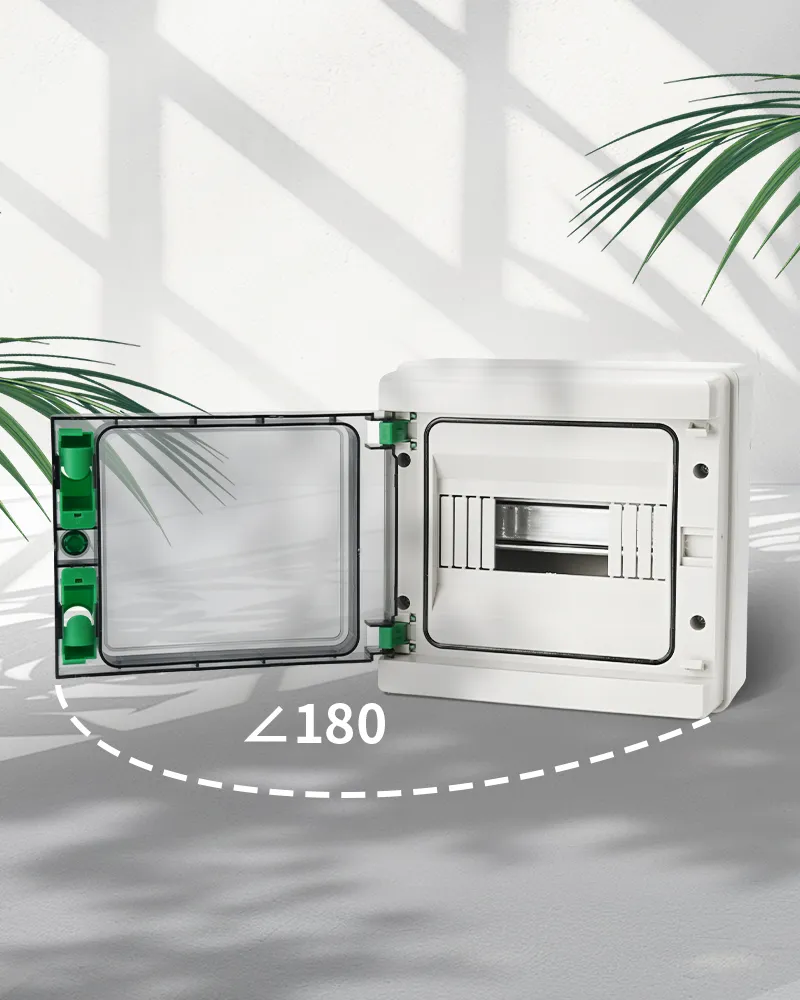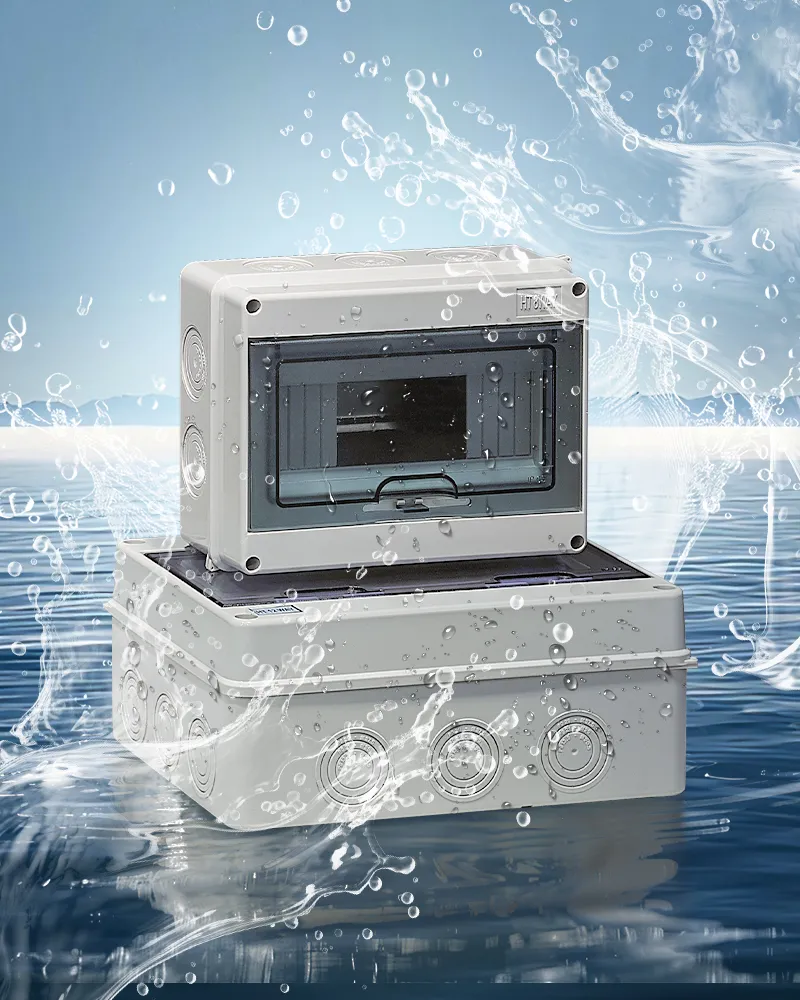Tired of dealing with water seeping into your outdoor electrical Box ? Look no further! Follow our tips to keep your electrical box protected and dry. Avoid moisture from damaging your electrical setup. By implementing our advice, you can enjoy a worry-free rainy season. Ready to begin?
Understanding Outdoor Electrical Boxes
Outdoor electrical boxes play an essential role in daily life, requiring proper installation and upkeep. Ensuring they are waterproof is a key part of their maintenance. Achieving this isn’t complicated—just use the appropriate tools and methods.
- Check that the cover seals tightly.
- Apply silicone sealant around openings and screws.
If these steps aren’t enough, consider switching to a waterproof enclosure. These come in various sizes and designs, often featuring drainage holes at the bottom.
Keep your electrical boxes safe and dry by making them waterproof!

Selecting Waterproof Outdoor Electrical Boxes
Selecting the right waterproof outdoor electrical box can feel challenging. Keep these key factors in mind:
| Factors to Consider | Suggestions |
|---|---|
| Water resistance rating | Opt for boxes with a rating that matches your specific requirements. |
| Material | Select plastic, steel, or aluminum depending on the environmental conditions. |
| Size and weight | Choose a box that fits your project’s dimensions and is easy to handle and install. |
Additionally, check for features that enhance functionality, such as ventilation. Always follow the manufacturer’s guidelines during installation. Considering these aspects will help you create a safer and more efficient outdoor electrical system.
Ensure your outdoor electrical box is installed correctly to avoid any unexpected issues!
Proper Installation Techniques
To ensure your outdoor electrical box remains waterproof, it’s crucial to follow proper installation methods. Here are five essential steps for a secure setup:
- Choose an appropriate location, keeping it out of reach of children and pets.
- Select a waterproof electrical box that complies with industry standards.
- Seal and insulate all wires and connections using waterproof materials.
- Install a weatherproof outlet cover to protect against rain, snow, ice, and other elements.
- Inspect the box and cover regularly, replacing any damaged components as needed.
Additionally, avoid using power tools near the outdoor electrical box to prevent accidents. For added protection, you can apply waterproof sealant, but only if you’re experienced with handling such materials. Routine maintenance is key to keeping your electrical box dry and functional—unless, of course, you enjoy the sound of sparks during a storm!

Regular Maintenance Practices
Maintaining your outdoor electrical box is essential for safety and longevity. Follow these five tips to ensure it stays in good condition:
- Seal Gaps: Inspect for cracks or openings that could let moisture in. Use silicone caulk or weather-resistant tape to seal them.
- Keep It Clean: Remove dirt and debris using a dry cloth or a soft-bristled brush to prevent buildup.
- Check Wiring: Regularly examine the wiring entering and exiting the box. Repair loose connections or exposed wires immediately.
- Trim Vegetation: Overgrown plants can increase moisture levels. Keep the area around the box clear by trimming nearby shrubs and foliage.
- Schedule Inspections: Have a professional inspect the electrical box annually to catch potential issues early.
Always prioritize safety when working with electricity. Avoid attempting repairs unless you are qualified, as improper handling can be dangerous.
By performing regular maintenance, you’ll keep your electrical box safe and functional for years to come. Addressing minor issues now can prevent costly problems in the future!
Safety Precautions
Taking proper safety measures is crucial when working with outdoor electrical boxes. These will help protect you from potential electrical hazards during maintenance or repairs:
- Turn Off the Power: Always switch off the power supply before starting any work.
- Wear Protective Gear: Use rubber gloves and boots to minimize the risk of electric shocks.
- Inspect for Water Damage: Check for signs of moisture or water damage before handling the box.
- Avoid Metal Tools: Do not use metal tools near the electrical box to prevent accidental conductivity.
- Keep the Area Dry: Ensure the area around the box is free of water and other hazards.
Additionally, confirm that the box is properly sealed. Look for cracks or gaps in its cover and seal them with waterproof materials to keep moisture out.
By following these precautions, you can significantly reduce the risk of injury and protect both your health and your home from electrical damage. Keeping the box dry ensures there are no unexpected shocks!
FAQs
1.Can outdoor electrical boxes get wet?
Yes, if not sealed properly. Use weatherproof covers to prevent moisture.
2.How often should I inspect my outdoor electrical box?
Check yearly and after severe weather.
3.Can I install an outdoor electrical box myself?
It’s better to hire a licensed electrician for safety.
4. Do I need to cover my outdoor electrical box during a rainstorm?
No, a weatherproof cover provides sufficient protection.
Conclusion
Ensuring the safety and protection of your outdoor electrical box is crucial for maintaining a reliable power supply. Start by inspecting the box for leaks or moisture sources. Seal all openings with high-quality waterproof materials and ensure proper ventilation to prevent damage. Regular checks are essential to catch any issues early.
For effective waterproofing, use rubber gaskets around wires and secure cables with durable connectors. Protect outlets with weatherproof covers to extend their lifespan and functionality.
Routine maintenance by licensed professionals is highly recommended. This not only helps you avoid costly repairs but also minimizes potential hazards. If you’re uncertain or have concerns, always consult a professional for assistance.
